
Mountain towns have a pull about them— cool as that might be, the crispness of morning through night air; silence that isn’t void yet feels full.
These are the places people go to reset, then realize they never want to leave. Lately, a quiet wave is rising in lesser-known alpine communities: homes are still affordable, but values are doubling fast.
Whether you’re dreaming of a second home, a smarter investment, or a total life pivot, this list isn’t just about real estate — it’s about rediscovering places where life feels a little deeper, a little freer. The best part? You’re still early to the party.
1. Hickory, North Carolina
Near: Great Smoky Mountains National Park
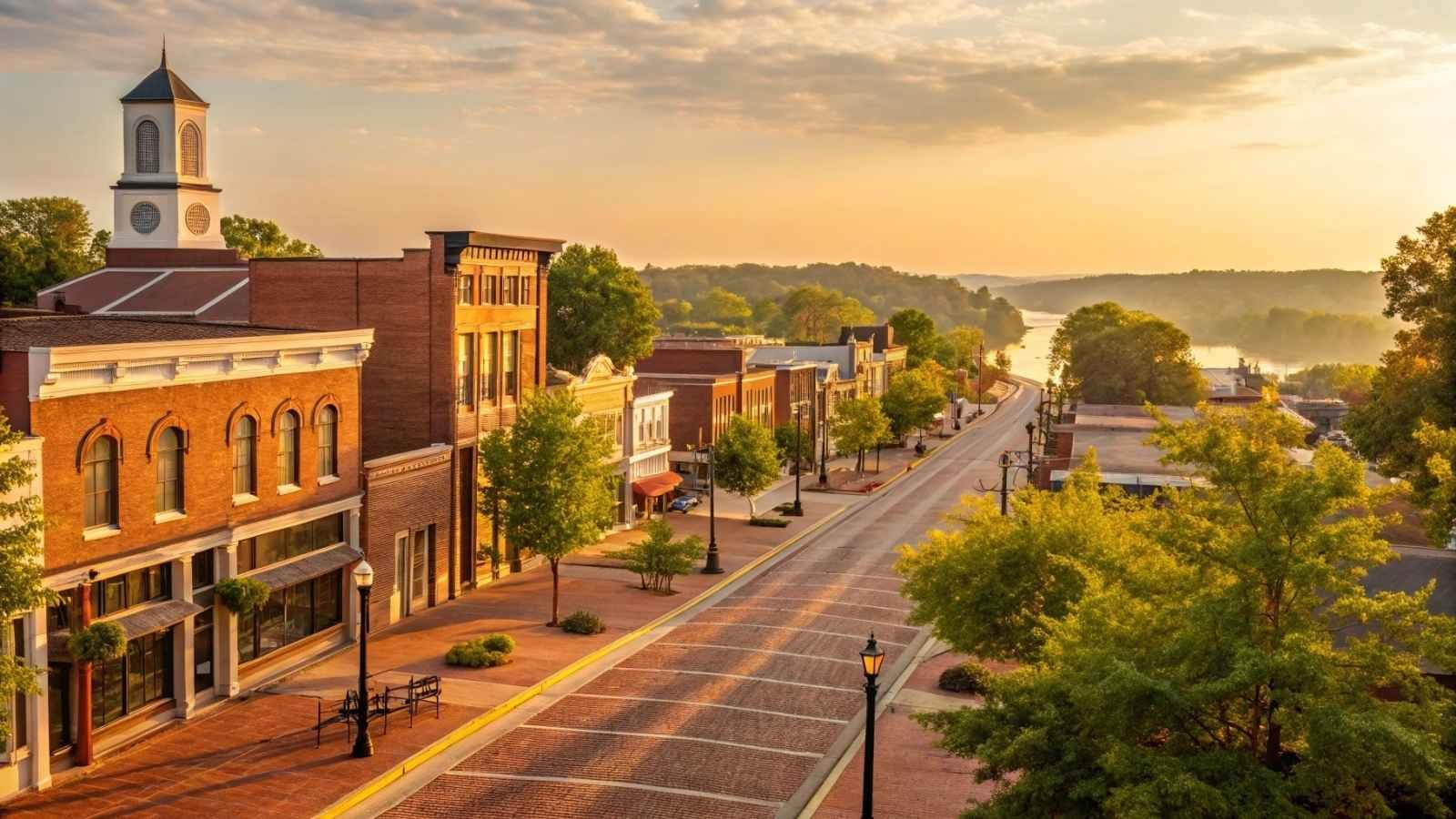
Hickory has subtly shifted from a longstanding Southern furniture town into one of the talk-of-the-town hidden gems in the Appalachians. Being just over an hour’s drive from the entrance to the Great Smoky Mountains, Hickory provides a complete package of small-town charm, natural vistas, and fast-growing. Downtown is rapidly changing, as craft breweries, coffee shops, and boutique retail blend into the historic architecture — a clear sign of where the market is going.
Some property values have more than doubled in value since 2020, and the median is still way below the national average. Apart from the investor buyers, we’ve also seen out-of-state buyers include remote workers, early retirees, and families interested in outdoor sports. Weekend warriors now have waterfalls, amazing overlooks, and ample hiking with the Blue Ridge Parkway located nearby.
If you’re looking for a lifestyle that balances quiet Appalachian living with actual upward financial movement, Hickory is one of the most compelling spots in the Southeast right now.
Key Information:
- Best Months to Visit: April to June, September to early November
- Population: ~43,000
- Median Home Price (2024): ~$265,000
- National Park Distance: ~90 minutes to the Great Smoky Mountains
- Nearby Outdoor Highlights: Linville Gorge, Pisgah National Forest, Lake James
- Climate: Mild winters, lush springs, crisp fall foliage
2. Eureka Springs, Arkansas
Near: Buffalo National River / Ozark National Forest

Eureka Springs is quite an unusual historic Victorian mountain village that is not like any other town in the Ozarks. The village in which streets and stone stairways hug the hillsides soulfully — weirdly interesting, unlike any other. It feels like a village in Europe. However, there is more to Eureka Springs than just its oddity. The real estate market has been getting hotter, in part due to growing awareness of its location near Buffalo National River, the nation’s first designated National River. This is a protected outdoor playground for experiencing epic kayaking, hiking, and camping.
The town’s architecture is preserved in the entire downtown being on the National Register of Historic Places, making it attractive not only to tourists but also to buyers who see long-term value in unique real estate. There’s a high percentage of short-term rental properties here, but also a growing group of full-time residents, especially creatives, digital nomads, and early retirees drawn to its affordability and freedom.
Local realtors report a significant uptick in out-of-state buyers, particularly from Texas and Colorado, who are shocked by how far their money stretches here. The real surprise? Arkansas has one of the lowest property tax rates in the country.
Key Information:
- Best Months to Visit: March to May, October for fall color
- Population: ~2,100
- Median Home Price (2024): ~$238,000
- National Park Proximity: ~40 minutes to Buffalo National River access
- Outdoor Perks: Hiking in Ozark National Forest, kayaking the Buffalo, and hidden caves
- Vibe: Eclectic, artsy, and low-key libertarian
3. Chattanooga, Tennessee
Near: Great Smoky Mountains National Park / Chickamauga & Chattanooga National Military Park
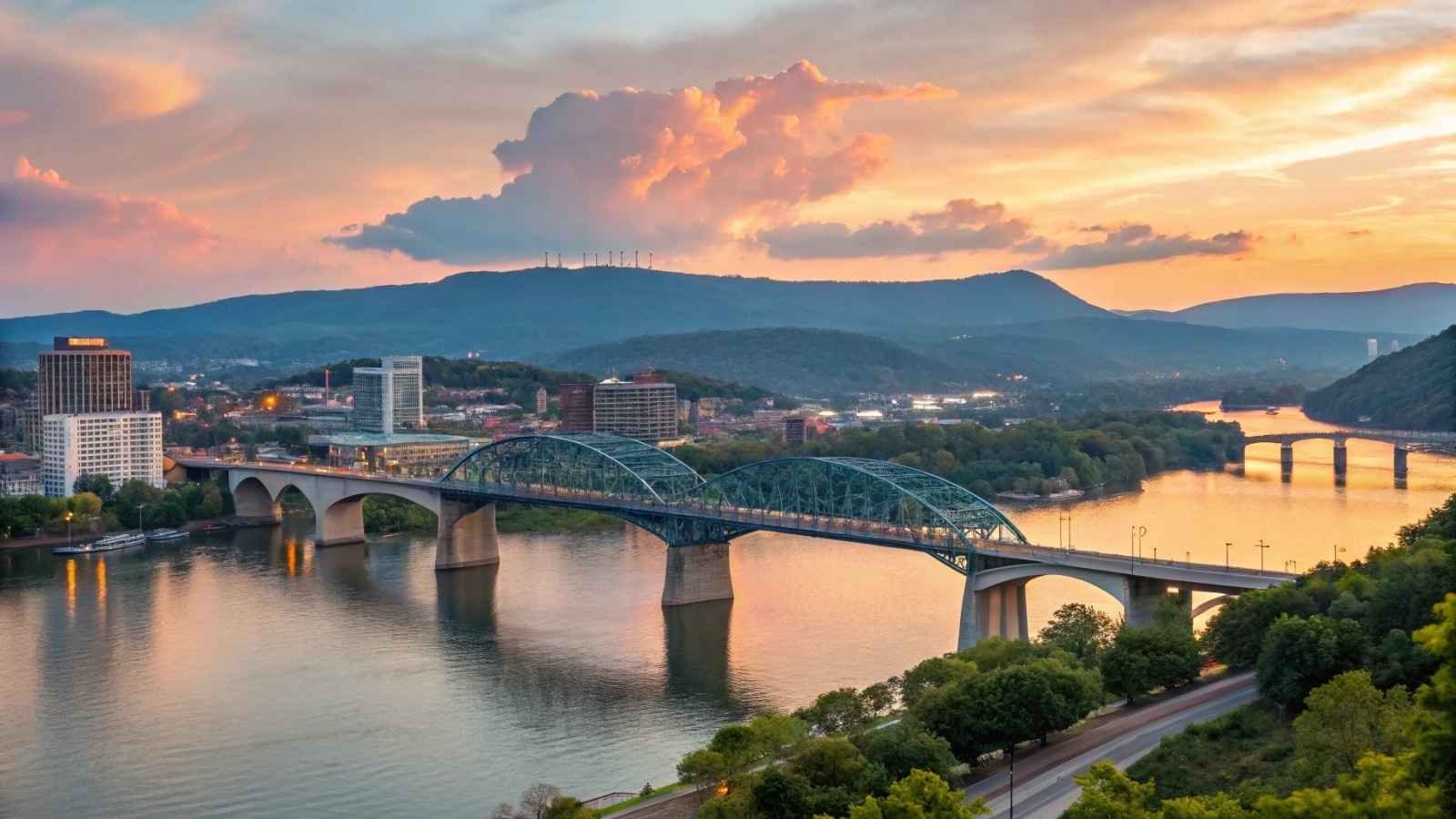
Chattanooga isn’t exactly a secret anymore, but it’s still shockingly affordable compared to other mid-sized mountain towns with this much momentum. It is not just a beautiful getaway, it’s a city with fiber internet like any other, a full-blown startup scene, and supreme outdoor access that allows you to go. Downtown to looking at a mountain in under 15 minutes: go from espresso at a city cafe to a twist off the exit ramp.
Chattanooga is nestled between several mountain ridges and hugs the Tennessee River, creating that perfect mix of livability and escape. While home prices have surged in recent years, they remain far more reasonable than in Asheville or Boulder. Plus, Tennessee has no state income tax, which attracts entrepreneurs and retirees alike.
What’s wild is how much value people get in older neighborhoods that are now gentrifying rapidly — think Craftsman bungalows with river views or mid-century homes on tree-covered lots for under $ 400 K. With massive infrastructure investments and plenty of outdoor lifestyle appeal, Chattanooga is increasingly the mountain town everyone wishes they’d discovered five years ago.
Key Information:
- Best Months to Visit: March to May, September to November
- Population: ~180,000
- Median Home Price (2024): ~$310,000
- National Park Proximity: ~2 hours to GSMNP, 15 mins to local parks
- Top Outdoor Spots: Lookout Mountain, Signal Mountain, Rock City, the Tennessee Riverwalk
- Big Plus: Gig-speed internet citywide and major tech investment
4. Bryson City, North Carolina
Near: Great Smoky Mountains National Park
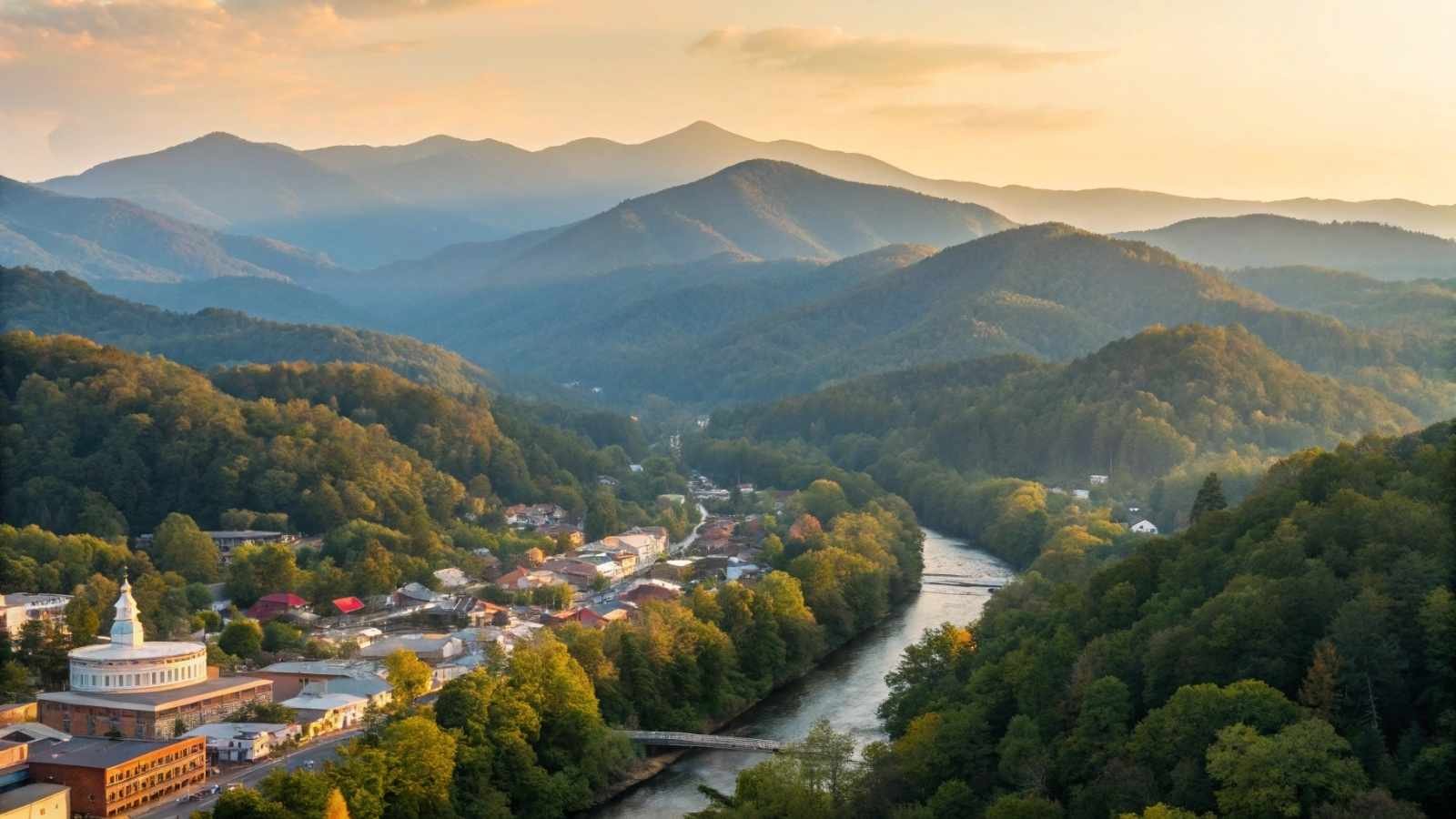
If you’ve ever driven the Blue Ridge Parkway or hiked Deep Creek Trail, chances are you passed through Bryson City — and maybe didn’t even realize how much it’s blossomed. This quiet western North Carolina town is just minutes from one of the most visited national parks in the U.S., yet it remains delightfully under the radar. That’s changing fast.
Bryson City has become a magnet for buyers looking for second homes or short-term rentals, which has naturally driven up property values. But unlike Asheville or Boone, it’s still within the “affordable” zone — for now. Quaint cafes, a charming railroad museum, and the gateway to Nantahala National Forest make it a year-round basecamp for adventure lovers.
It’s just a hop, swim, and kayak on the Nantahala River, some Hiking in the Smokies, and fly fishing in cool mountain streams make it hot property among outdoor types. But then again, it seems like an old school mountain town that just isn’t sure where it wants to be.
Key Information:
- Best Months to Visit: April to June, October for leaf-peeping
- Population: ~1,500
- Median Home Price (2024): ~$285,000
- National Park Access: 5 minutes to Smoky Mountains entrance
- Nearby Adventures: Whitewater rafting, Deep Creek waterfalls, Tsali biking trails
- Bonus: Great Smoky Mountains Railroad tourist train hub
5. Fayetteville, Arkansas
Near: Ozark National Forest / Buffalo National River

Fayetteville might surprise some folks. It’s a college town — home to the University of Arkansas — but also a rising star in the mountain real estate world. Nestled in the Boston Mountains (a part of the Ozarks), this city blends small-town hospitality with intellectual energy and a serious outdoor culture. You’re never more than 30 minutes from Ozark National Forest trails, and Buffalo National River is just up the road.
Property prices here have been climbing steadily, with many investors focusing on the student rental market, but there’s also a quiet movement of remote workers and young families relocating for the quality of life. The arts and music scene is lively, and local officials have put real money into building out mountain biking trails and public greenways.
The town has a vibe that feels both forward-thinking and deeply rooted. You’ll find gourmet coffee shops next to 100-year-old general stores, and university events next to cowboy boots and craft beer. It’s all working, and it’s why Fayetteville keeps ending up on “best places to live” lists year after year.
Key Information:
- Best Months to Visit: April to May, late September to early November
- Population: ~100,000
- Median Home Price (2024): ~$305,000
- National Park Proximity: 45 minutes to Buffalo River, 20 to Ozark hiking
- Lifestyle Perks: Farmer’s markets, university arts, top-ranked bike trails
- Fun Fact: Part of the Razorback Greenway 37-mile trail system
6. Ogden, Utah
Near: Great Salt Lake / Wasatch Mountains / Proximity to Yellowstone & Grand Teton

Ogden often plays second fiddle to Salt Lake City, but smart buyers are realizing that’s part of its charm. Ogden was once a tough railroad town, but is now full of outdoor-oriented transplants, particularly the Park City priced out. Part of the Wasatch Range, which is just about the greatest skiing/hiking/climbing you’re ever going to do — and a town full of murals and microbreweries hitting that rugged-meets-hip identity hard, plus weekend farmers markets.
Ogden, while not right next door to a major national park has plenty of access to them: Yellowstone, Grand Teton and Arches are all day drives readily accessible for weekend jaunts. Across the way, Snowbasin and Powder Mountain are 30 minutes from home which places it among top US winter sports homestays.
Real estate here has seen impressive appreciation, especially in historic neighborhoods and hilltop areas with mountain views. And yet? It’s still one of Utah’s most affordable mountain towns.
Key Information:
- Best Months to Visit: May to October for hiking, December to March for skiing
- Population: ~87,000
- Median Home Price (2024): ~$350,000
- Nearest National Parks: ~4 hours to Yellowstone, ~3.5 to Arches
- Outdoor Lifestyle: Skiing, mountain biking, rock climbing, paddleboarding
- Local Bonus: 23rd Street’s art walk and craft beer scene is a hidden gem
7. Maggie Valley, North Carolina
Near: Great Smoky Mountains National Park / Blue Ridge Parkway
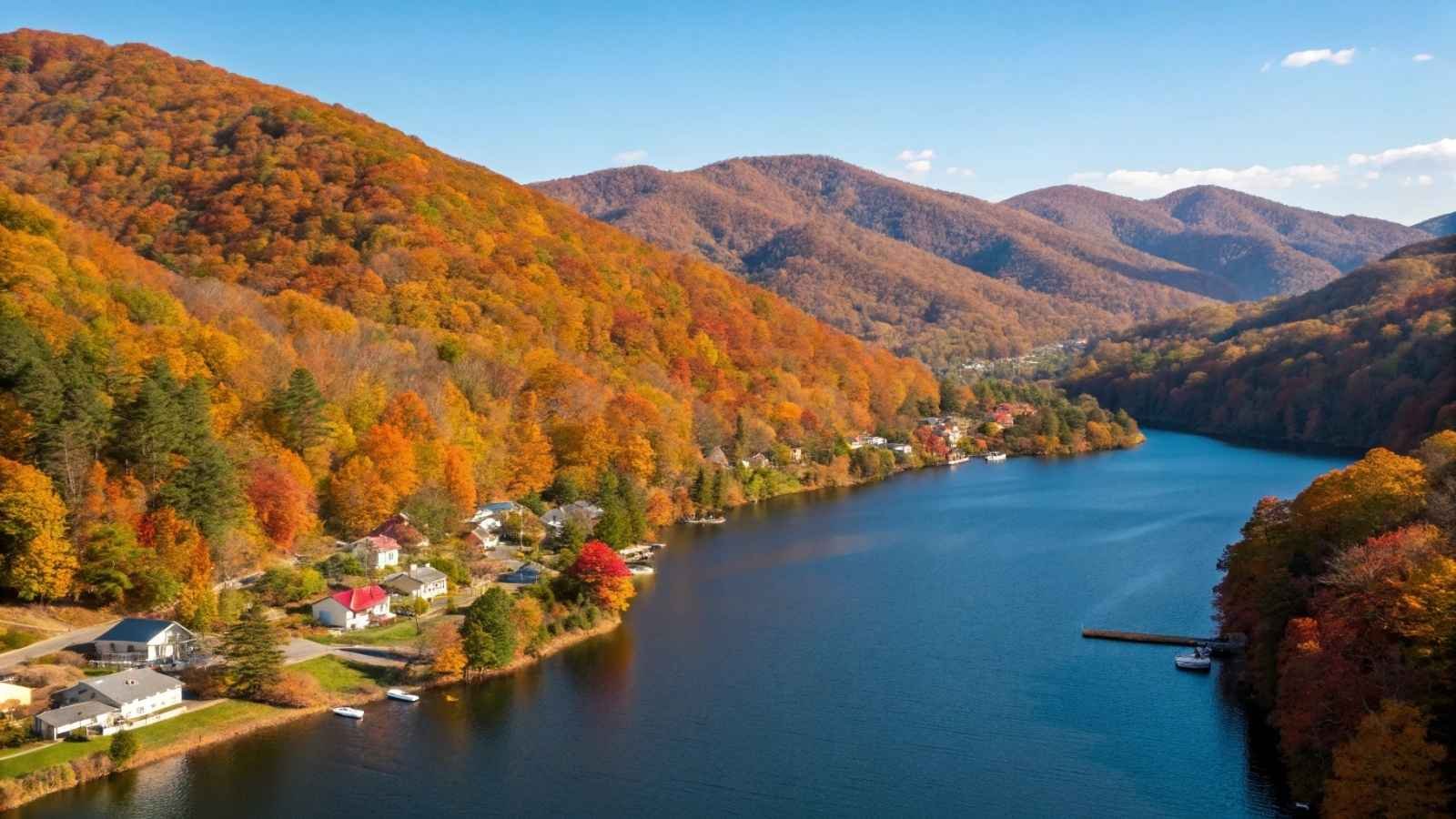
Maggie Valley feels like a slice of old Appalachia with a few welcome modern touches. It’s nestled right between the Blue Ridge Parkway and the entrance to Great Smoky Mountains National Park — giving you immediate access to some of the most scenic drives and hikes in the eastern U.S. Long a haven for RV travelers and motorcyclists, it’s now catching the eye of younger buyers and vacation property investors.
What makes Maggie Valley particularly appealing is how much home you can get for your money. Cabins with million-dollar views often sell for half that, and there’s no shortage of forested land for those looking to build. Yet, it still flies under the radar compared to nearby Asheville or Cherokee, so prices haven’t reached peak frenzy yet.
It’s also one of those rare towns where nature, music, and Southern hospitality meet. You’ll find live bluegrass, pancake breakfasts, and the occasional black bear wandering through a backyard.
Key Information:
- Best Months to Visit: May to October
- Population: ~1,300
- Median Home Price (2024): ~$295,000
- Proximity to Park: 20 minutes to GSMNP entrance
- Nearby Highlights: Cataloochee Valley elk viewing, Soco Falls, mountain motels
- Fun Fact: Cataloochee Ski Area offers rare East Coast snow runs
8. Taos, New Mexico
Near: Carson National Forest / Rio Grande del Norte National Monument
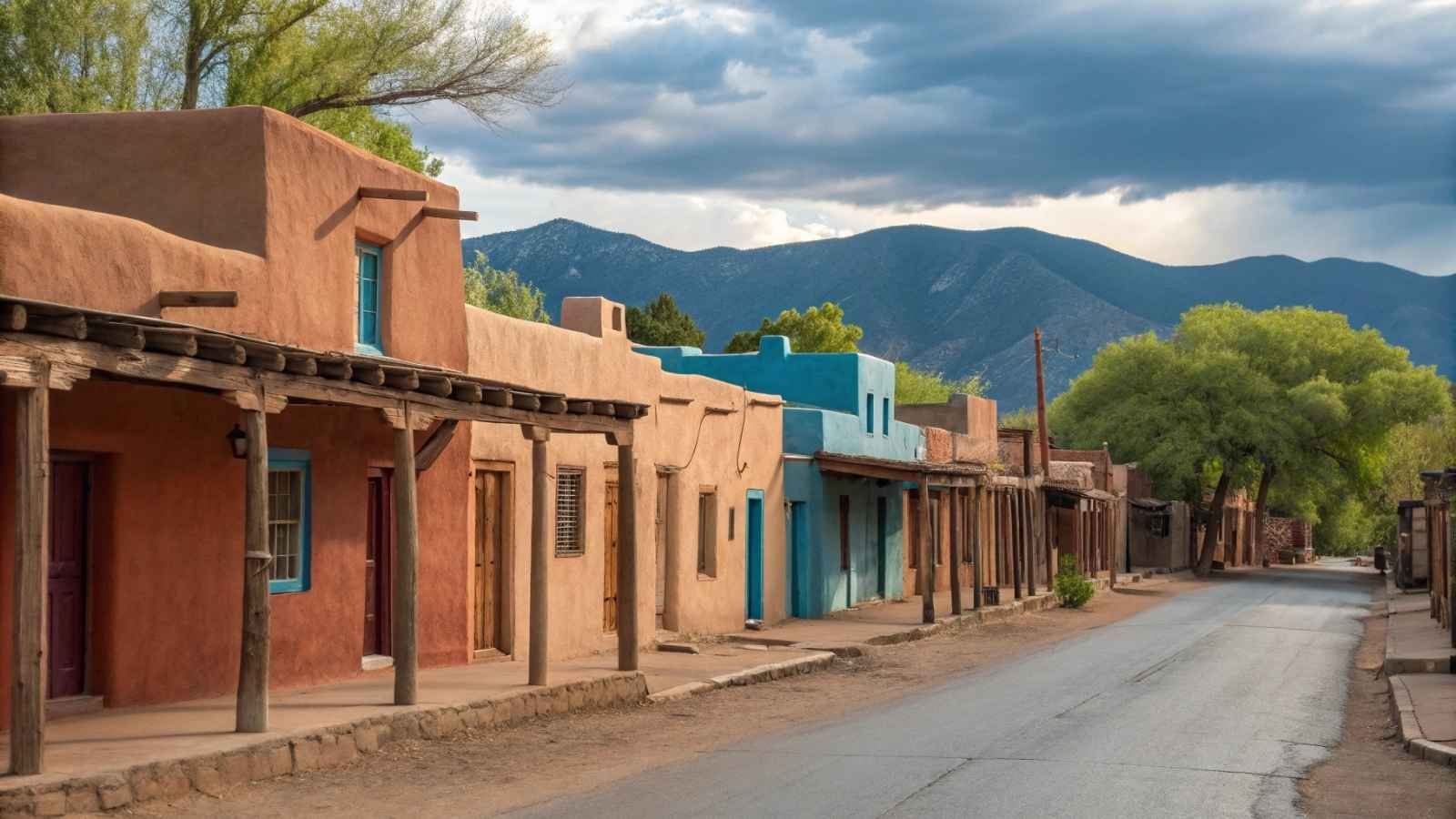
Taos might be the most spiritually iconic town on this list. A blend of Native American heritage, Spanish colonial history, and a modern arts colony, it’s perched at over 7,000 feet with massive mountain views and a wildly creative energy. While the ski slopes and art galleries draw attention, Taos also offers surprisingly good value in its outlying neighborhoods and surrounding mesas.
Though home prices in the walkable historic core are rising fast, many buyers are finding deals just outside town. What’s driving growth? A potent combo: year-round outdoor adventure (skiing, rafting, hiking), strong short-term rental demand, and a deep-rooted culture that keeps people coming back.
When you add public lands, national monuments that border Taos and the UNESCO World Heritage Site — Taos Pueblo — it becomes apparent: Taos is not good-looking, it is important.
Key Information:
- Best Months to Visit: March to May, September to November
- Population: ~6,500
- Median Home Price (2024): ~$370,000
- Closest Parklands: Rio Grande del Norte, Carson National Forest
- Outdoor Adventures: Whitewater rafting, snowshoeing, high desert hiking
- Cultural Gems: Taos Art Museum, Earthship Biotecture, Taos Pueblo
9. Durango, Colorado
Near: San Juan National Forest / Mesa Verde National Park

Mountain bikers, skiers, and river rats all know their way around Durango town. However, now? It’s going viral among real estate buyers with long-term upside. The high desert vibes with alpine benefits are where south western Colorado makes its home, home in Durango, Mesa Verde National Park, Durango & Silverton Narrow Gauge Railroad, and miles upon miles of untouched backcountry trails
It’s one of the more expensive towns on this list, but it’s cheap compared to any other Colorado town, like Telluride or Breckenridge. Property has also skyrocketed here post-2020, with a large percentage of remote workers and nature-loving transplants from the greater Denver area and California showing up.
The town itself is walkable and charming, with a historic downtown that hums with breweries, coffee shops, and gear outfitters. It also boasts a regional airport, making it unusually accessible for its size.
Key Information:
- Best Months to Visit: May to October, December to February for skiing
- Population: ~19,000
- Median Home Price (2024): ~$485,000
- National Park Access: ~45 minutes to Mesa Verde
- Top Experiences: Animas River Trail, Purgatory Ski Resort, hot springs
- X-Factor: Scenic train rides through the mountains
10. Red Lodge, Montana
Near: Yellowstone National Park (via Beartooth Highway)

Red Lodge is the kind of town that punches way above its weight. With under 3,000 residents, it still manages to draw a loyal community of artists, skiers, and wilderness lovers — and thanks to its location at the base of the Beartooth Highway, it’s one of the most scenic gateways to Yellowstone National Park.
The housing market here has been heating up fast, especially after the pandemic. Remote workers looking for fewer crowds and lower prices than Bozeman have discovered that Red Lodge offers big sky living without big city prices, at least for now. There’s a growing scene of farm-to-table dining, indie galleries, and outdoor festivals that give it real staying power.
Oh, and in winter? You’ve got your hometown ski hill at Red Lodge Mountain, which means fresh powder without the crowds of the big resorts.
Key Information:
- Best Months to Visit: June to September
- Population: ~2,300
- Median Home Price (2024): ~$425,000
- Proximity to Yellowstone: ~70 miles via scenic Beartooth Highway
- Best For: Skiing, backcountry hiking, wildlife spotting
- Claim to Fame: Beartooth Highway is called “the most beautiful drive in America” by Charles Kuralt
11. Luray, Virginia
Near: Shenandoah National Park
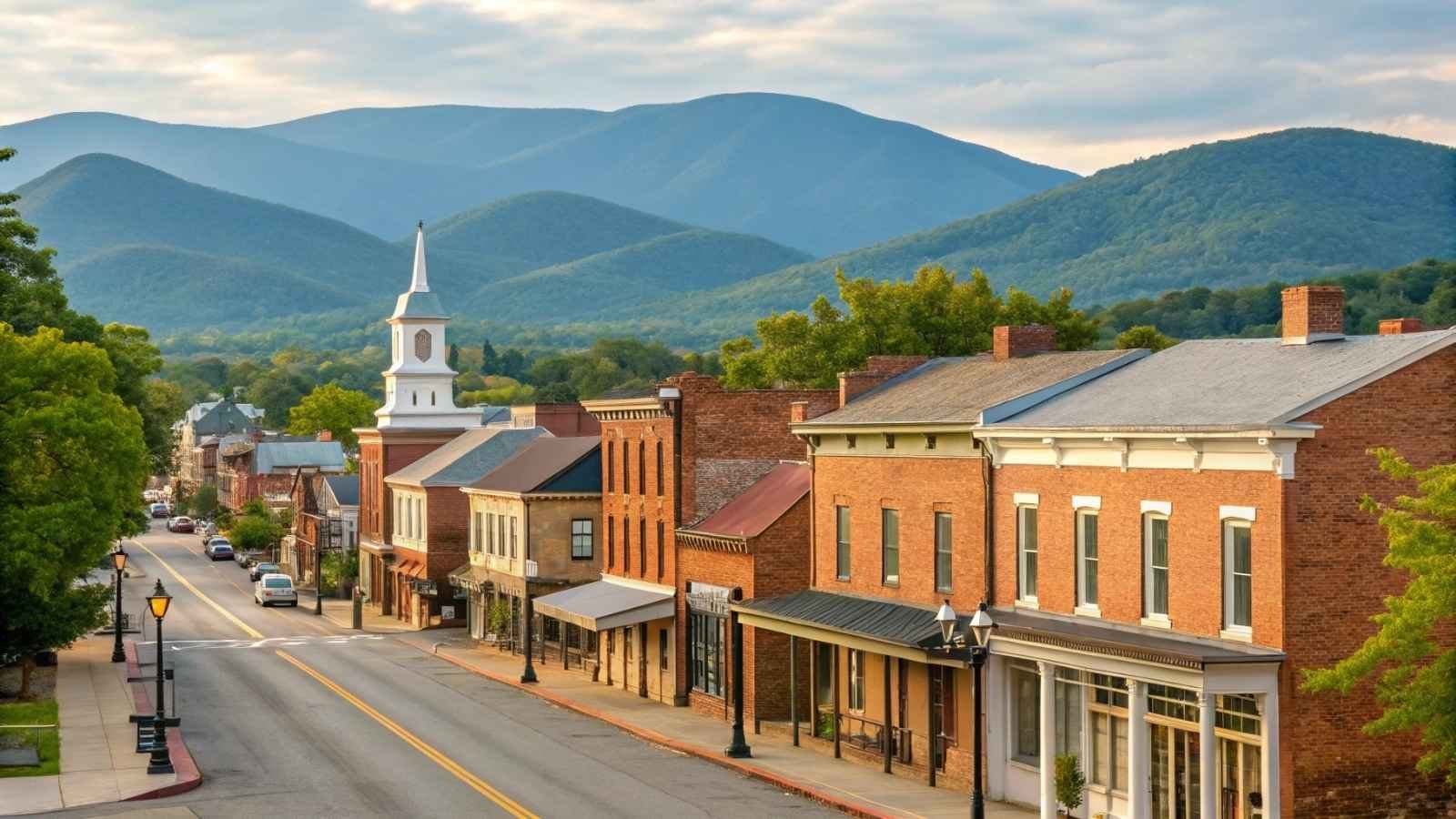
Luray is one of those towns that you think would belong in a storybook. Located in the foothills of Shenandoah Valley and nestled against the Blue Ridge Mountains forged it made one of the most frequented roads to get into Shenandoah National Park & Skyline Drive — two monuments of Eastern wilderness.
Now the twist: the region has rich Civil War and small-town America landscapes, but property values have quietly increased by nearly 90% over the past few years.
What’s driving the boom? A growing number of buyers from D.C. and Northern Virginia, many of whom are cashing out of metro-area real estate and looking for second homes or peaceful retirement bases. Meanwhile, Luray continues to attract adventure tourists with its famous caverns, river tubing, and Appalachian Trail access, which means strong potential for vacation rental income, too.
Even with the momentum, prices remain surprisingly accessible — and the town’s slower pace and walkable historic district are a welcome antidote to big-city burnout.
Key Information:
- Best Months to Visit: April to June, October for peak foliage
- Population: ~4,800
- Median Home Price (2024): ~$280,000
- Proximity to Park: 10 minutes to Shenandoah’s Thornton Gap entrance
- Nature Bonus: Luray Caverns, Hawksbill Greenway, Shenandoah River
- Rental Tip: Skyline Drive tourism season boosts Airbnb demand
12. Lead, South Dakota
Near: Black Hills National Forest / Wind Cave & Badlands National Parks
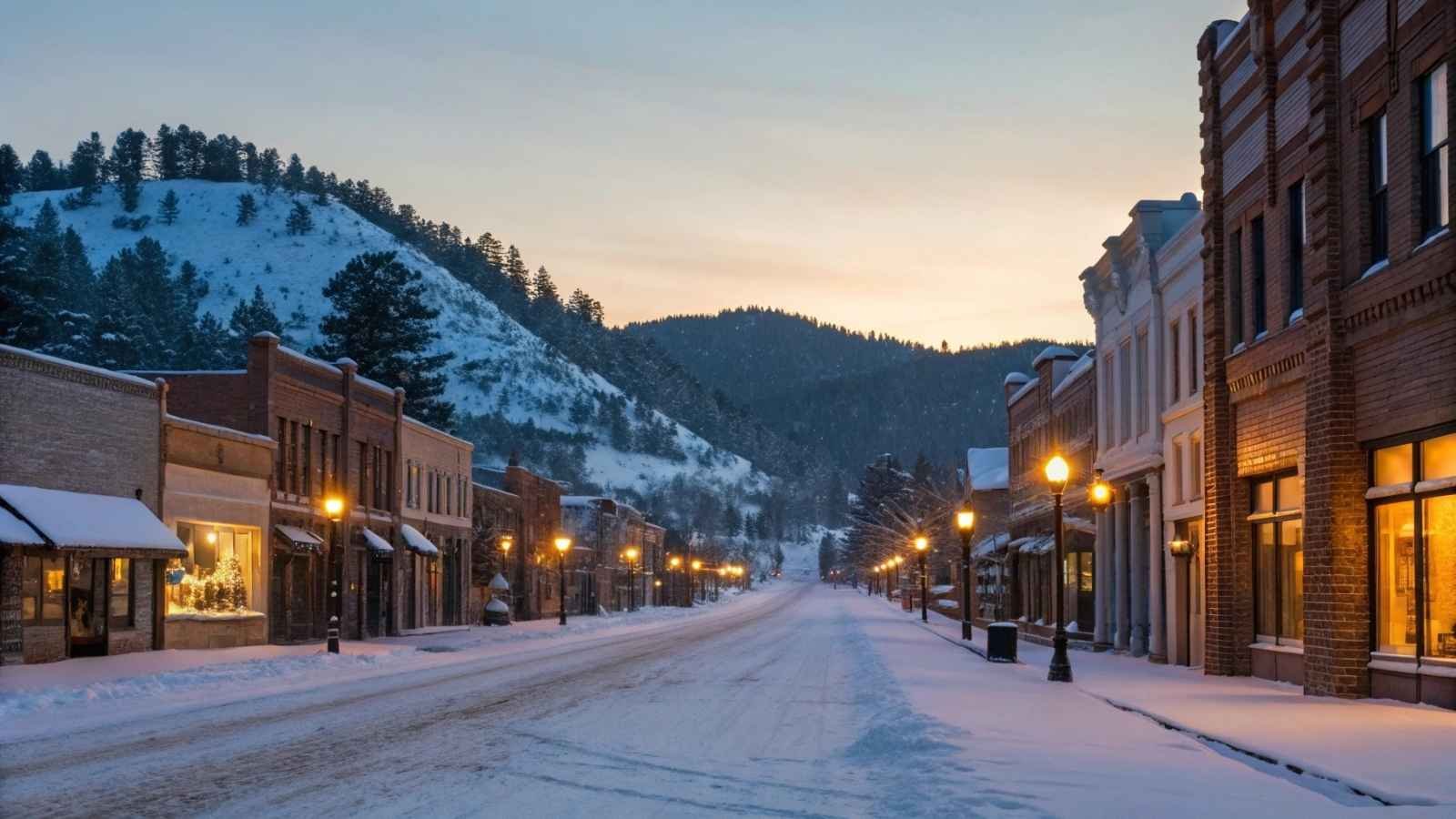
At over 5,000 feet elevation, Lead (pronounced “Leed”) offers big mountain energy in the middle of the prairie states. Just outside Deadwood and a short drive from the surreal beauty of Badlands and Wind Cave National Parks, Lead is experiencing a quiet renaissance. Once a gold mining boomtown, it’s now being rediscovered by remote workers, nature buffs, and investors chasing undervalued real estate in the Mountain West.
The town’s mining past is still visible — literally. The Homestake Mine, once the largest and deepest gold mine in North America, is now the site of a national underground science lab. It’s one of many signs that Lead is leaning into a high-tech-meets-wilderness future.
Homes here remain far below national averages, and vacant lots with sweeping views can still be picked up for a song, but the market is heating up fast. Add in no state income tax and a regional surge in outdoor tourism, and Lead becomes a strong play for both lifestyle and long-term value.
Key Information:
- Best Months to Visit: May to September
- Population: ~3,000
- Median Home Price (2024): ~$240,000
- National Park Proximity: ~1 hour to Badlands, 40 mins to Wind Cave
- Nearby Fun: Spearfish Canyon, Mickelson Trail, Mount Rushmore
- Unique Factor: Science meets mining history at Sanford Underground Lab
13. Cloudcroft, New Mexico
Near: Lincoln National Forest / White Sands National Park

High up in the Sacramento Mountains, Cloudcroft lives up to its name — often kissed by clouds and surrounded by dense pine forests that feel worlds away from the desert flats below. It’s one of the coolest (literally and figuratively) places in southern New Mexico, and it’s drawing attention for its affordable mountain real estate and growing appeal as a high-altitude escape.
While White Sands National Park is just down the hill (about 45 minutes), Cloudcroft is more forest retreat than a desert basecamp. It offers skiing in winter, wildflower hikes in summer, and an adorable downtown complete with a historic railroad trestle and old-school ice cream shop.
Unlike many ski-adjacent towns, it hasn’t been overrun by big money — yet. Small cabins with serious views are still under $300K, and lots of residents grow their own food or run small businesses geared toward tourists and RV travelers. It’s offbeat, peaceful, and well worth a look.
Key Information:
- Best Months to Visit: May to October for hiking, December to February for snow
- Population: ~700
- Median Home Price (2024): ~$265,000
- Nearby Parks: 45 mins to White Sands, surrounded by Lincoln National Forest
- Best For: Stargazers, solitude seekers, micro-farmers
- Altitude Bonus: Over 8,600 feet elevation — rare in southern NM
14. Sandpoint, Idaho
Near: Selkirk Mountains / Kaniksu National Forest / Proximity to Glacier NP

Tucked along the shores of Lake Pend Oreille and surrounded by the rugged Selkirk Mountains, Sandpoint delivers scenery that rivals Jackson Hole at a fraction of the cost, for now. Though prices are rising steadily, this northern Idaho town still offers a shot at mountain lakefront living without blowing past the $500K mark.
Sandpoint is about 3 hours from Glacier National Park, but it has its vast wilderness right out the back door. Think kayaking at dawn, backcountry snowshoeing in winter, and some of the best biking and trail running in the Pacific Northwest. What’s more, the town has a vibrant arts scene, a local symphony, and a distinctly laid-back, indie vibe.
Many residents say they came for a weekend and never left. It’s a place where the line between vacation and daily life gets blurry, in the best way possible.
Key Information:
- Best Months to Visit: June to September, winter for the Schweitzer ski season
- Population: ~9,000
- Median Home Price (2024): ~$440,000
- Proximity to Glacier NP: ~3 hours east
- Local Perks: Schweitzer Mountain Resort, Pend Oreille wine cruises, vibrant arts festivals
- Bonus Appeal: Lake + mountains = all-season appeal






